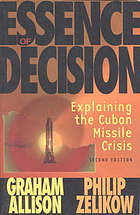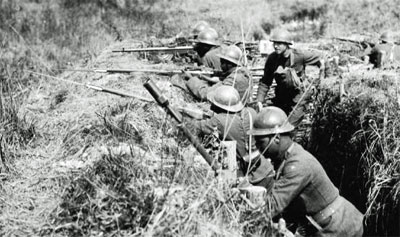
Wohlstetter, R. (1962).
Pearl Harbor; warning and decision.
Stanford, Calif: Stanford University Press
read pages vii-ix and 382-401

Allison, G. T. (1971).
Essence of decision: Explaining the Cuban missile crisis.
Boston: Little, Brown
read pages v-viii;
skim pages 10-38, 87-100, 144-184;
read pages 243-263; and
skim pages 264-277

This is a draft article written by one of the fellows I accompanied in France in September. Read the article while thinking about the impact of organizational culture, in both the French and American armies, in 1918.
